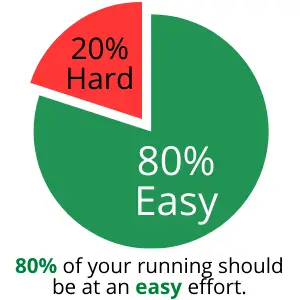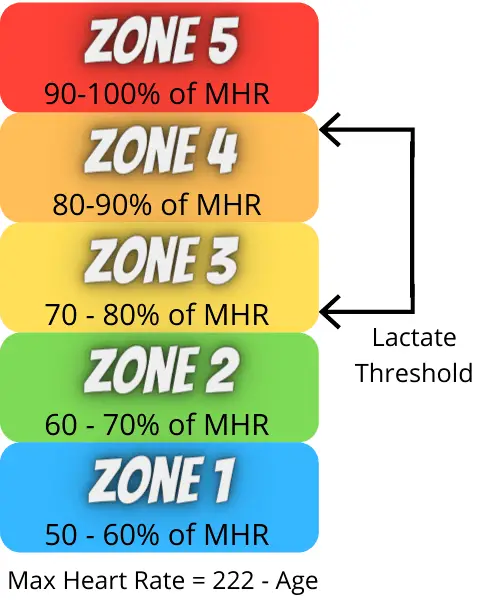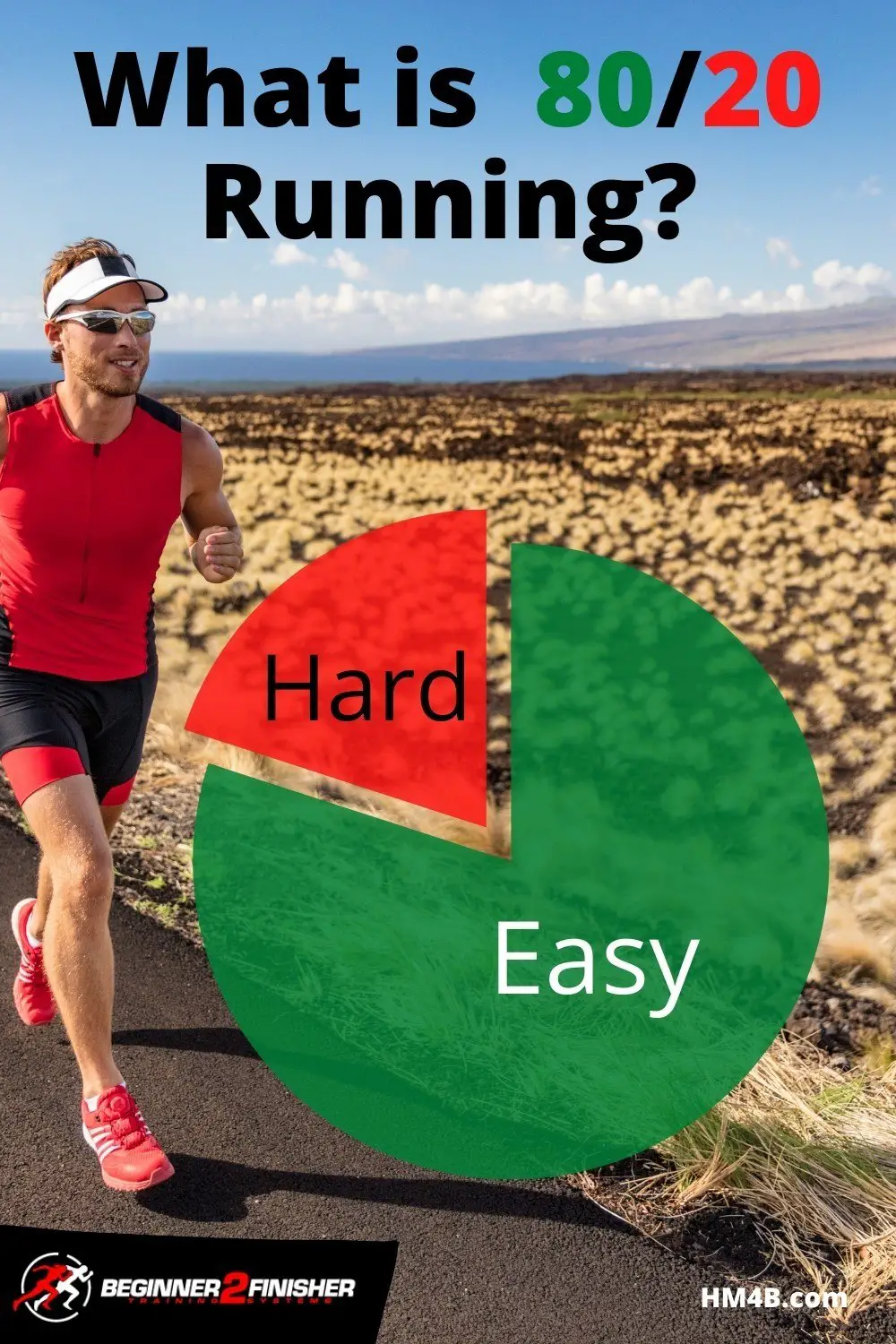The 80/20 Rule according to running
The 80/20 rule is a prevalent running rule and one used by runners of all standards. The rule is that 80 percent of your weekly training is at a low to moderate intensity – and 20 percent of your weekly routine is at a high-intensity.
What is the actual 80/20 rule?
The 80/20 percent rule is a rule that suggests 80 percent of all outcomes come from 20 percent of all causes. People of all fields, industries, and sports use the rule.
Who created/coined the concept of 80/20 running?
The Italian economist Vilfredo Pareto was the first to introduce the concept. Initially, Vilfredo Pareto applied the law to Italian economics. The law suggested that 80 percent of Italy’s land was owned by 20 percent of Italy’s population.
Furthermore, the United Nations used the work of Pareto in 1992 when they showed the inequality of global income. The United Nations found that the wealthiest 20 percent of the world generated 82.7 percent of global income.
The computer-science industry has used the Pareto principle in optimization efforts. Microsoft figured that repairing 20 percent of the most reported bugs would eliminate 80 percent of the related errors and crashes.

Benefits of 80/20 running:
If you’re a long-distance runner, you might believe that having continuously hard runs every day will build your endurance. However, most – if not all – elite athletes don’t train in this manner.
Exercise physiologist Stephen Seiler found that the 80/20 rule benefits your endurance system drastically. Stephen also found that most elite runners, triathletes, rowers, runners, and swimmers work on the 80/20 principle.
Since Stephen Seiler researched the 80/20 principle, various sports scientists have backed up Stephen Seiler’s findings. These scientists include Augusto Zapico, Veronique Billat, and Johnathan Esteve-Lanao.
Less risk of injury
One of the most significant benefits of the 80/20 principle is less risk on the joints and muscles. If you spend most of your time running at zone 1 to 2 – the chances of getting injured are considerably lower. Common running injuries from overuse and high-intensity are shin splints, runner’s knee, plantar fasciitis, stress fractures, and IT band syndrome.
When you complete most of your running at low intensity, your body is getting more time to recover from the high-intensity runs. These runs include fartlek training, HIIT, and running a race at zone 5 heart rate. Stephen Steiler recommended that runners 50 and over benefit immensely from the 80/20 principle because they need more rest after heavy workouts.
Improved aerobic capacity
When you spend most of your running in the lower heart rate zones – your aerobic capacity will drastically increase over time. If you are running endurance races, including 10k and upwards, you will need a strong aerobic capacity to avoid ‘hitting the wall’ later in the endurance race.
You need to get used to running in the lower heart rate zones for as long as possible, but if you want to build more speed, then the higher heart rate zones (moderate to high intensity) running will hugely benefit you. That’s why the 80/20 principle is a good all-around mix.
Research shows an increase in performance in low mileage races.
A common feeling when Stephen Steiler first conducted his research was that 80/20 running would not benefit shorter distance runners. For example, shorter races that are 10k and under. This idea interested Stephen Steiler, so he decided to research it.
In one study, 30 runners with 10k times of under 40 minutes split into two groups. One group would deploy the 80/20 running strategy. The other group uses the 50/50 principle.
After nine weeks of running using these training strategies, the 80/20 group increased their 10k time by 5 percent on average, and the 50/50 group increased their running by 3.7 percent on average.
That showed a slight increase of 35 seconds for those using the 80/20 principle, and the top 80/20 performers increased their time by 7 percent, equating to a 47-second time increase. Although the 50/50 principle proved big improvements for the running team – the 80/20 method yielded better results.
Drawbacks of 80/20 running:
Hard to calculate
The biggest issue of a rule like this is trying to calculate the rule. When researchers and scientists determine a rule through observation and research, researchers base the results on averages. Therefore, scientists have determined the 80/20 split by taking the average of a wide range of athletes.
Some athletes have benefitted from a split closer to 90/10, and other athletes might have benefitted from a split that was closer to 70/30. There is an inherent risk that 80/20 might not be the best training ratio for you. That is because the research is based on an average of many runners, not individual runners.
What are the 80/20 heart rate zones?
The 20 percent of your running that you do at a high intensity should be zone 3 and above. Zone 3 heart rate is 70 percent of your maximum heart rate and above.
The 80 percent of low-intensity work should be at a zone 1-2 heart rate. Zone 1 and 2 are between 50 percent and 70 percent of your maximum heart rate.

What are the 80/20 Effort levels compared to the Rate of Perceived Exertion (RPE)?
I have provided an example of one runner’s effort. RPE is unique in that it is catered toward each individual runner. One runner’s easy effort can be completely different than an above-average runner’s easy effort.
The 80% easy zone of effort would equate to an RPE between 4 and 6.
The 20% hard effort would equate to an RPE between 7 and 8.
Rate of Perceived Exertion (RPE) - EXAMPLE
| RPE | Difficulty | Talk Test | Pace |
|---|---|---|---|
| 10 | All-out - Max Effort | Can't talk, out of breath | 8:00 |
| 9 | Extremely hard | one or two words at a time | 8:30 |
| 7-8 | Medium to Hard Effort (Interval) | Can speak in small sentences | 10:00 |
| 4-6 | Moderate Effort (Endurance) | can have a conversation | 12:00 |
| 2-3 | Light Effort (walking) | No problem talking | 15:00 |
| 1 | No Effort (Sitting/Standing) | No problem talking | 0:00 |
| RPE | Difficulty | Talk Test | Pace |
|---|---|---|---|
| 10 | All-out - Max Effort (Sprints/Strides) | Can't talk, out of breath | |
| 9 | Extremely hard (Speedwork) | one or two words at a time | |
| 7-8 | Medium to Hard Effort (Interval/Speedwork) | Can speak in small sentences | |
| 4-6 | Moderate Effort (Endurance) | can have a conversation | |
| 2-3 | Light Effort (walking) | No problem talking | |
| 1 | No Effort (Sitting/Standing) | No problem talking |
What paces should you use when applying 80/20 running?
The pace that you decide to use depends on your fitness levels. When you start running in zone 1 and zone 2, you will perhaps have to walk now and again because your fitness levels are not used to running in the lower zones. Your heart rate might constantly dip into zone 3 and above because you’re not conditioned.
Furthermore, the pace you use to run at zones 3, 4, and 5 depends on your fitness level. Some elite runners can run the same speed at a zone 2 heart rate that a beginner runs at a zone 5 heart rate.
The best way to calculate your zones is to get a good running watch – like a Garmin watch – that will accurately calculate your heart rate zones via the built-in heart rate monitor.
What is the scientific proof 80/20 running works?
The scientific proof comes from various exercise scientists such as Stephen Seiler, who has conducted in-depth research on the 80/20 running method that found it works. Ever since Stephen conducted his research in the early 2000s, various scientists have backed it up.
Do elites use 80/20 running?
Yes, most elite athletes use the 80/20 running principle. Runners such as British Olympic marathon runner Paula Radcliffe is a big proprietor of the 80/20 principle. Also, most Olympic swimmers, cyclists, and rowers will use the 80/20 training methods.
Is 80/20 running ok for beginners to use?
Yes, it is excellent for beginners. One of the biggest drawbacks of being a beginner runner is the risk of injuries. If a beginner runner decides to work hard every time, it is not unusual to see them suffer from various running injuries.
However, when you spend most of the time running in the lower heart rate zones – your injury risks are far lower, especially when your body isn’t used to the stresses of running.
Furthermore, building a solid aerobic capacity from prolonged running in zone 1 and 2 will massively benefit beginner runners. It will build their limited aerobic capacity.
How Far Should I Run As A Beginner Runner?
References
Polar – Heart Rate Zones Basics
https://www.runnersworld.com/uk/training/motivation/a27718661/what-is-80-20-running/
| Help support me and subscribe to my YouTube channel. YouTube video - 30 ways to make your runs less painful! Coach Scott's Credentials:
|
To sign up for a FREE half marathon training schedule, log sheet, and pace predictor CLICK HERE.

Recommended gear for runners
Connect with me:
| facebook.com/BeginnerToFinisher/ |

